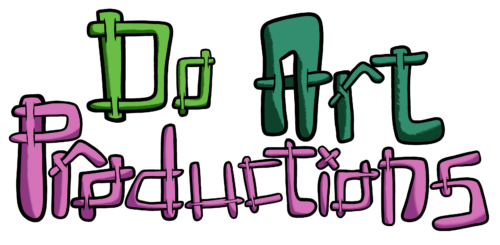A cold Tuesday–we drove to the Rochelle Public library, trying to avoid the ice on the roads. Jerry’s first-ever comic book workshop had been here, and we were coming back to re-introduce comics with a new speaker: me.
I’d been practicing for this moment for months. I’d practiced my speech to a cellphone camera, drawing cartoon characters on a whiteboard to gain confidence with dry-erase marker drawing. We’d even run a few practice workshops with Jerry’s family over Christmas, with his aunt doing a convincing impression of a misbehaving child to keep me on my toes.

But at last the moment had arrived. I was nervous, to be sure. Little things would go wrong, as things do, but my brain would make them into huge, insurmountable problems. Through it all, though, that workshop stared at me like the light at the end of a tunnel. Something almost too inevitable to be afraid of. Anyhow I was confident in my ability to get in front of whatever crowd I’d face. I was excited about art, and comics, and the power of creativity, and I knew that if I communicated that to my audience I’d be ok.
We set up in a performance space downstairs. Jerry’s family came out to support me, along with a few faces I did not recognize. I told them to start out with “wacky” drawings of me. Then, when the time came, I started out with the usual speech about INSPIRATION. The kids said they’d been inspired by the cold, or the weather. Then I said that inspiration can come from outside us, but also from inside ourselves.
That done, I began to talk about EYES as the engines of comics, drawing some eyes with different expressions and then asking what the eyes seemed to expressing. We then applied these lessons as I drew big, blank eyes and asked the kids what I should put inside them, and what these eyes would express. I drew a picture of spongebob, using audience requests to make him look even more wacky–a nuclear bomb, a nuclear explosion, a skirt, and an industrial ear piercing stand out in retrospect.
We ended with a crowd favorite: POSE DRAWING. Any sense of nervousness had vanished as I made an exaggerated disco pose and watched as one boy drew me on the whiteboard. Because comics involve action and narrative, one of the biggest challenges in creating them is drawing convincing poses of characters as they walk, fight, or interact with each other. Artists learn to solve this problem by drawing live models in various poses, training themselves in the anatomy and movement of a figure. We add our own “wacky” twist to this exercise by having kids draw our poses but portraying us animals or cartoon characters, often in outlandish situations as their imaginations run wild.
The comic book workshop ended. One little girl had come in toward the end, enticed by the sound of all the fun we were having. She contributed her little toddler’s scribble, to her mom’s delight. One of the moms recognized Jerry from high school. What had me the most excited, though, as I braced myself for the long drive back to my house, was watching the looks of excitement on the kids’ faces as I showed their artwork to the rest of the group (with their permission). So often we get lost in what we think, the flaws we imagine in our artwork. Seeing other people clap and act amazed, I was able to see a little glint of encouragement in the eyes of each kid brave enough to give me their art. When Jerry asked the kids, as he always does as they file out, “Are you going to do art later?” I knew their yeses were sincere.


